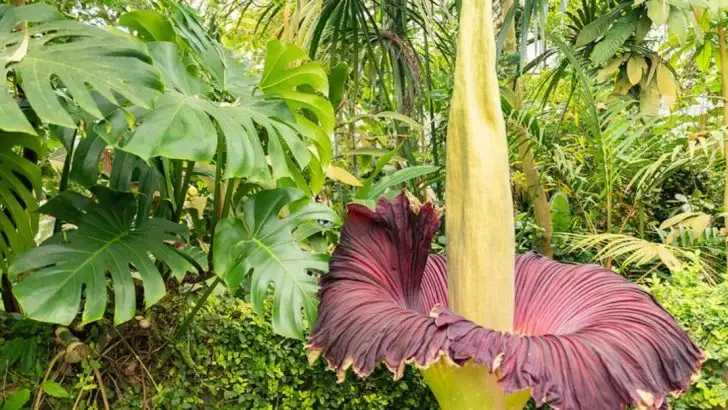Not all flowers smell sweet—some plants emit foul, rotting, or overpowering odors that might turn your nose away but attract essential pollinators like bees, flies, and beetles. These plants have evolved their stinky scents as a survival tactic, ensuring they get pollinated even in the most unexpected ways.
In this article, we explore 14 plants that smell horrible but are pollinator magnets. From the infamous corpse flower to stinky marigolds and pungent trees, these plants prove that sometimes, bad smells bring great benefits. If you’re curious about the strangest ways nature attracts pollinators, these odorous plants are sure to surprise you!
Corpse Flower (Amorphophallus titanum)
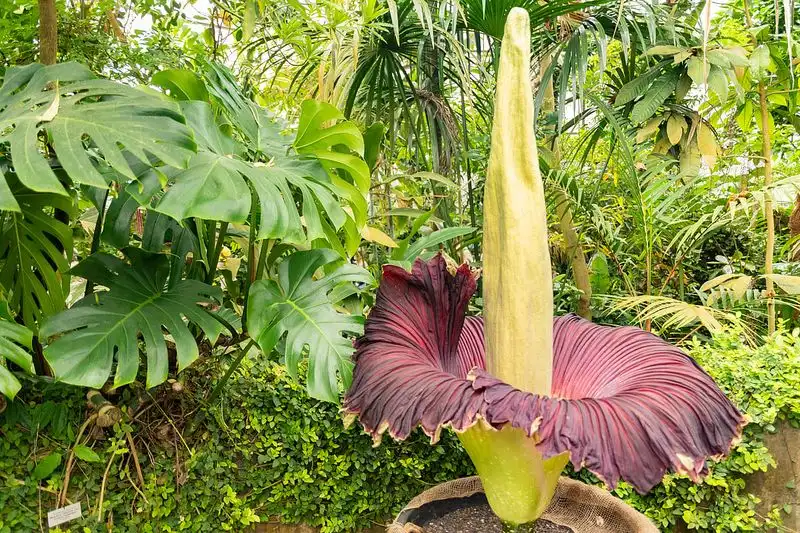
Known for its gigantic bloom, the Corpse Flower releases an odor reminiscent of rotting flesh. This scent is irresistible to carrion beetles and flesh flies, which are essential for its pollination. Found primarily in the rainforests of Sumatra, it blooms infrequently, with some plants waiting a decade or more between events. Despite its unappealing aroma, the rarity and size of the bloom make it a sought-after spectacle in botanical gardens worldwide. Its survival strategy is a testament to the complex interplay between plant and pollinator in the natural world.
Skunk Cabbage (Symplocarpus foetidus)
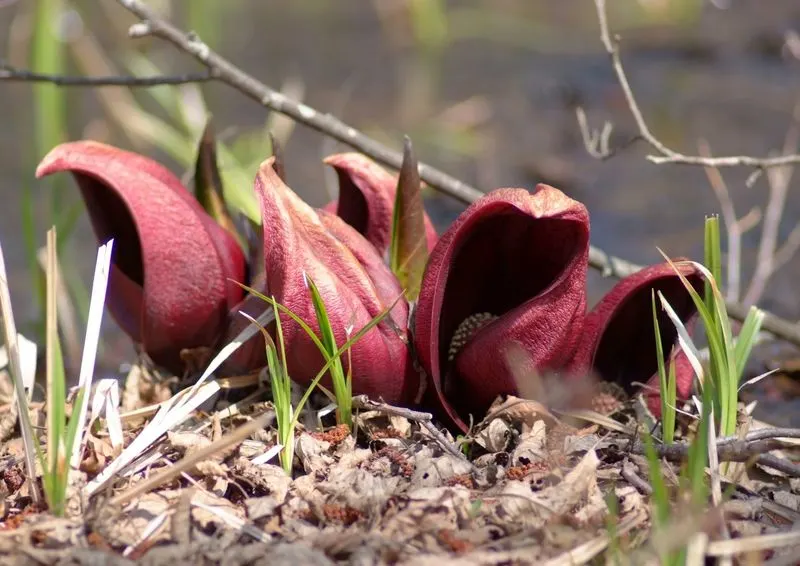
Releasing an odor similar to that of a skunk, this plant thrives in wetlands across North America. Skunk Cabbage generates heat to melt surrounding snow, allowing it to bloom early in the spring. The scent attracts pollinators such as flies and beetles, which are drawn to its unique aroma. Its ability to flower so early gives it a competitive advantage, ensuring pollination before many other plants have emerged. This plant’s quirky characteristics highlight nature’s creative adaptations for survival.
Rafflesia (Rafflesia arnoldii)
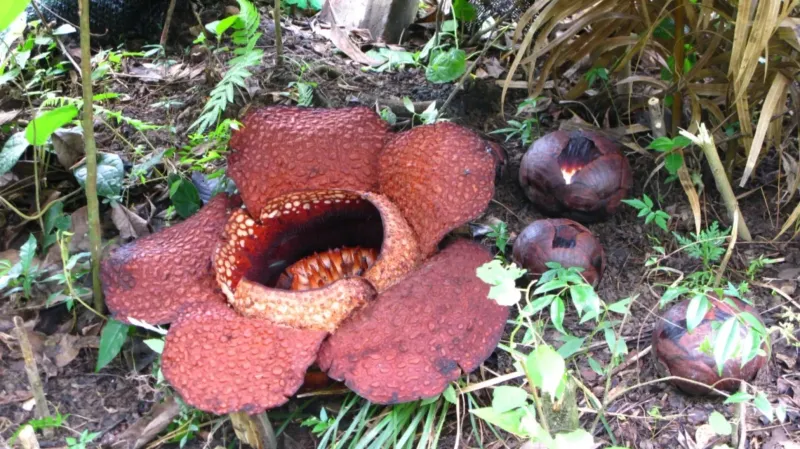
Renowned for having the largest individual flower, Rafflesia produces a stench akin to decaying meat. This odor is pivotal for attracting carrion flies, which facilitate its pollination. Typically found in the rainforests of Southeast Asia, the plant is parasitic, relying on a host vine for nutrients. The flower’s short-lived bloom, lasting only a few days, makes it a rare and intriguing sight. Its unique parasitic lifestyle and pungent smell play a crucial role in its reproductive success.
Crown Imperial (Fritillaria imperialis)
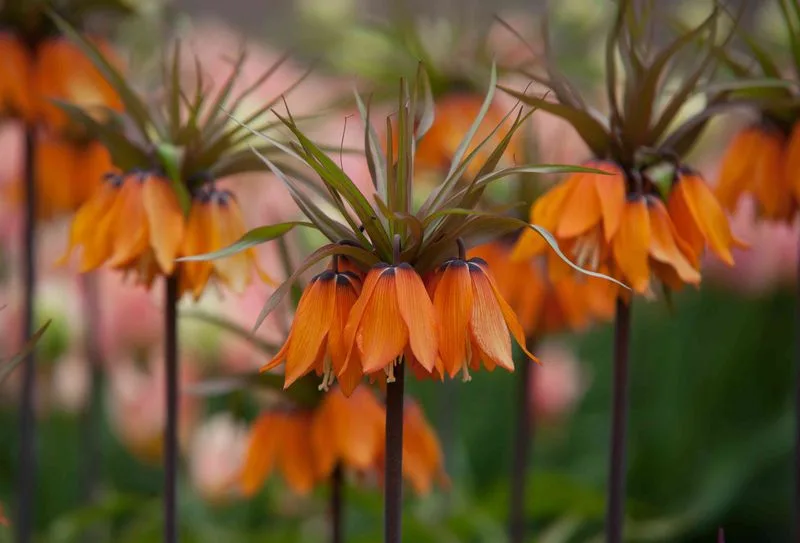
Despite its regal appearance, the Crown Imperial emits an unmistakable musky odor. This scent is particularly attractive to certain insects, ensuring effective pollination. Native to mountainous regions in Turkey and Iran, it has been cultivated worldwide for its striking beauty. Besides being a pollinator magnet, the plant’s fragrance also deters rodents, adding an extra layer of garden protection. This dual-purpose scent showcases nature’s multifunctional use of odors for survival.
Giant Voodoo Lily (Amorphophallus paeoniifolius)

Emitting an odor similar to manure, the Giant Voodoo Lily attracts pollinators such as flies and beetles. This tropical plant’s large inflorescence is both striking and malodorous, designed to lure insects essential for its pollination. Native to Southeast Asia, it is often grown for its dramatic presence rather than its scent. The plant’s ability to generate heat enhances its scent’s reach, making it a master of attracting attention in the dense jungle environment. Its existence is a fascinating example of evolutionary adaptation.
Bulbophyllum Orchid (Bulbophyllum phalaenopsis)
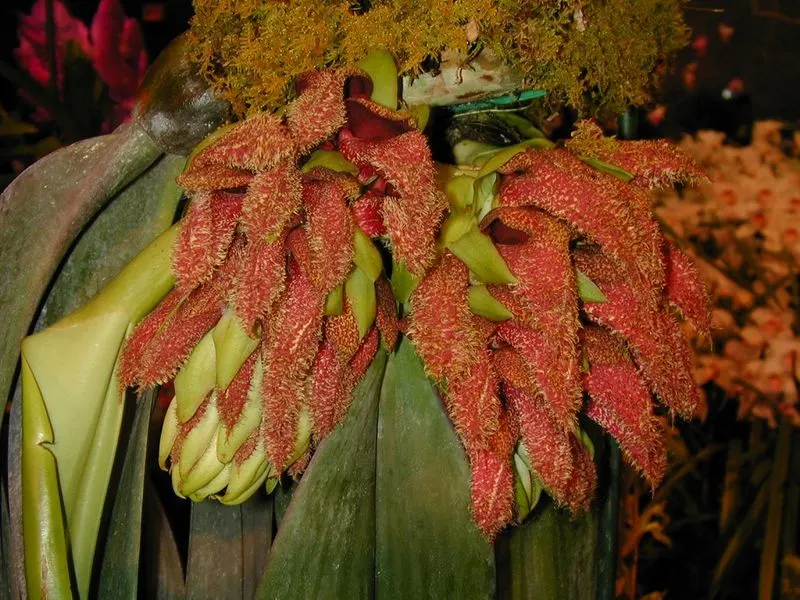
These orchids are famed not for their beauty but for their odor, reminiscent of rotting fruit. This smell is particularly appealing to fruit flies, which act as its primary pollinators. Found in warm tropical regions, these orchids have evolved to mimic the scent of food to ensure successful pollination. Their intriguing adaptation showcases the diverse strategies plants employ to thrive. Unlike their fragrant cousins, these orchids prioritize function over form in their pollination strategies.
Dead Horse Arum Lily (Helicodiceros muscivorus)

The pungent smell of decaying flesh emanates from this Mediterranean native, attracting blowflies for pollination. Its flower, a deep maroon color, resembles the flesh it mimics in scent. This striking adaptation ensures the plant’s reproductive success by enticing flies looking for a place to lay their eggs. Found on rocky terrains, its unique pollination method highlights the ingenuity of plant survival tactics. The Dead Horse Arum Lily’s morbid allure is a testament to nature’s resourcefulness.
Carrion Plant (Stapelia gigantea)
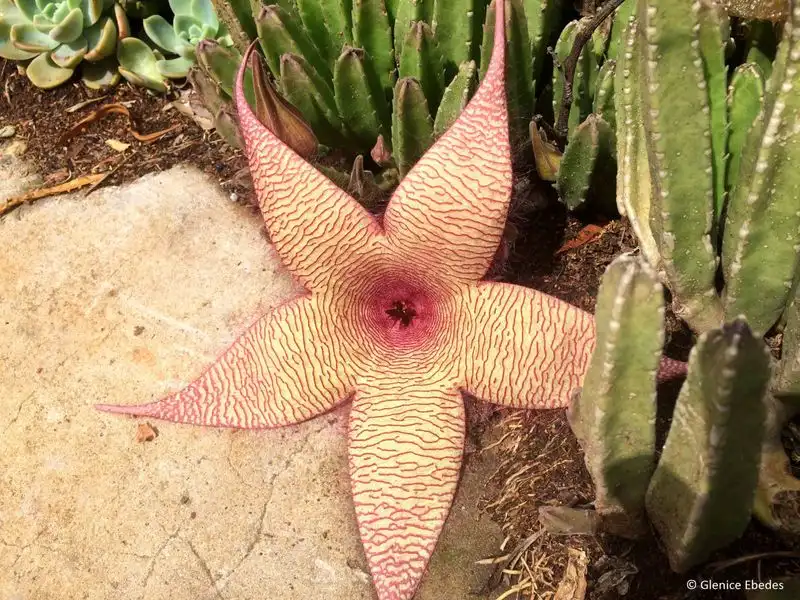
In the arid regions of Southern Africa, the Carrion Plant blooms with a smell akin to rotting meat. This scent lures flies and beetles, which are instrumental in its pollination process. The plant’s star-shaped, hairy flowers mimic the appearance of decaying flesh to further entice its insect partners. Despite the unpleasant aroma, the Carrion Plant’s striking appearance makes it a popular choice among succulent enthusiasts. Its adaptation to harsh environments showcases its resilience and ingenuity.
Eastern Skunk Cabbage (Symplocarpus foetidus)
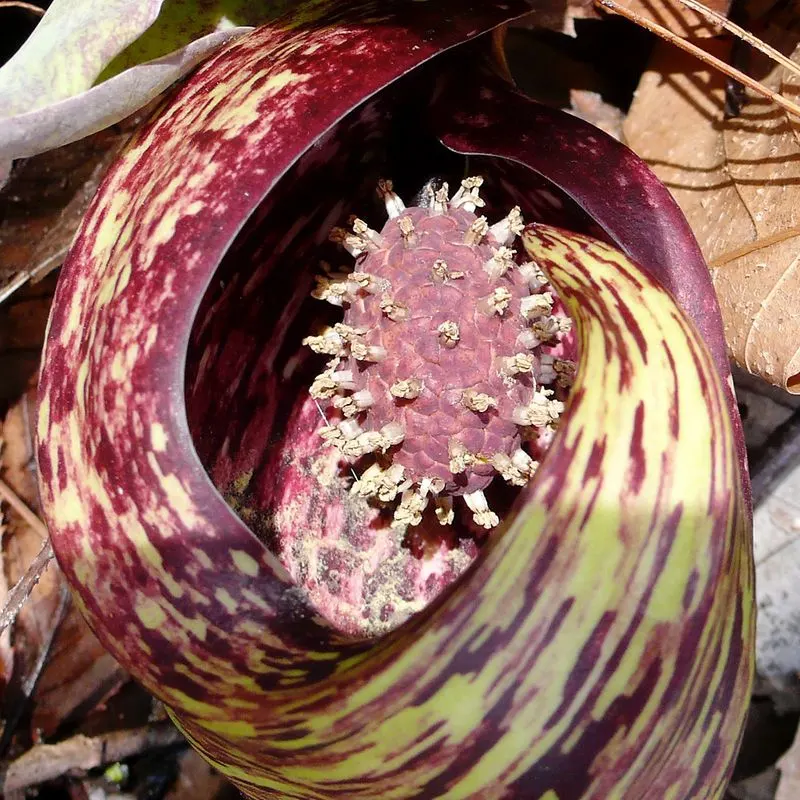
With a smell akin to skunk spray, this plant stands out in American wetlands. Its thermogenic capability allows it to bloom while snow still blankets the ground, offering early spring nourishment to flies and beetles. The conspicuous hooded flowers add an element of surprise to the otherwise bleak landscape. Its ability to thrive in chilly conditions grants it an advantage over other flora, showcasing adaptive ingenuity that ensures its propagation each year.
Giant Water Lily (Victoria amazonica)
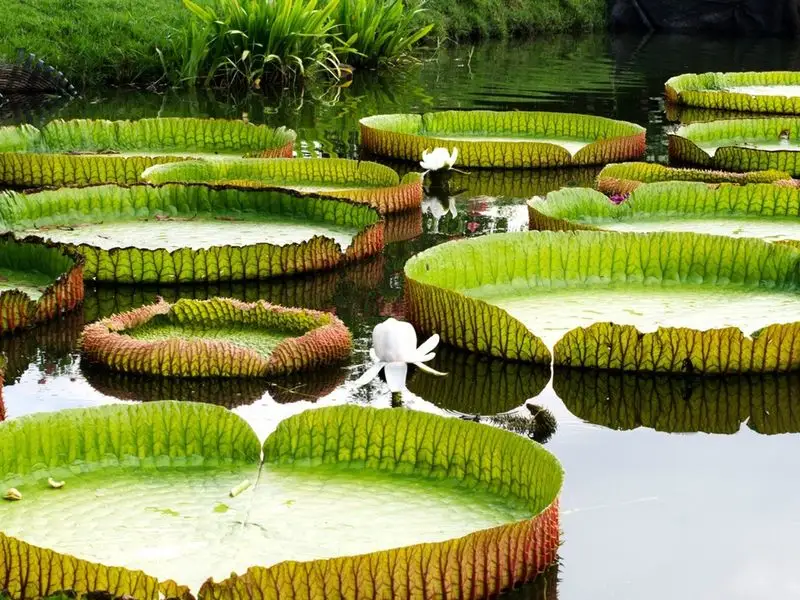
Besides its grandiose leaves, this Amazonian native is known for its pungent aroma. The scent, similar to fermenting fruit, calls out to beetles, inviting them to participate in its pollination process. During its nightly bloom, the flower’s transformation entices these insects, who find refuge within its petals. Such clever tactics highlight the lily’s role within its aquatic ecosystem, where it reigns as a floral giant. The interplay of scent and bloom cycle makes it a true marvel of natural adaptation.
Staghorn Sumac (Rhus typhina)
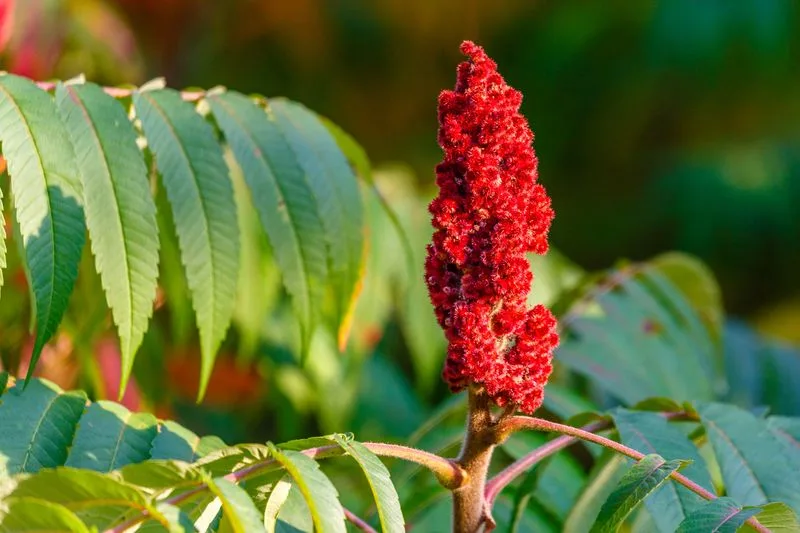
While its fiery red drupes are visually appealing, the Staghorn Sumac’s blossoms emit a pungent smell. This odor attracts a variety of insects, ensuring effective cross-pollination. Found throughout North America, the plant is known for its adaptability to various environments. Despite the smell, it is often used in landscaping for its aesthetic appeal and ability to support wildlife. The Staghorn Sumac showcases how some plants balance attractive and deterrent qualities to ensure their ecological roles are fulfilled.
Western Skunk Cabbage (Lysichiton americanus)

True to its name, the Western Skunk Cabbage emits a sharp, skunky odor, enticing flies and beetles. This scent, combined with its vibrant yellow bloom, makes it highly visible in the damp, shaded environments it calls home. Native to the Pacific Northwest, this plant’s unique aroma is key to its reproductive success. The Western Skunk Cabbage’s vivid presence in nature’s palette exemplifies adaptation and allure working hand in hand.
Durian (Durio zibethinus)
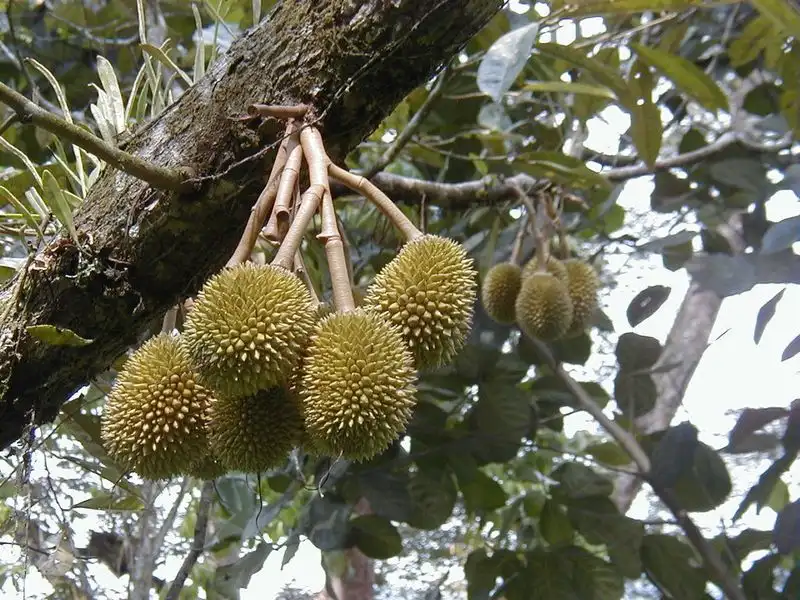
Often called the “King of Fruits,” durian is notorious for its potent smell, likened to turpentine or raw sewage. This overpowering aroma, however, does not deter pollinators like bats and insects that feast on its nectar. Native to Southeast Asia, durian fruits are a delicacy despite their odor, which appeals to a unique set of fauna. The durian’s strong scent is a classic example of how nature leverages powerful smells to ensure the cycle of life continues. Balancing allure and offense, it remains a marvel of botanical adaptation.
Eastern Skunk Cabbage (Symplocarpus foetidus)
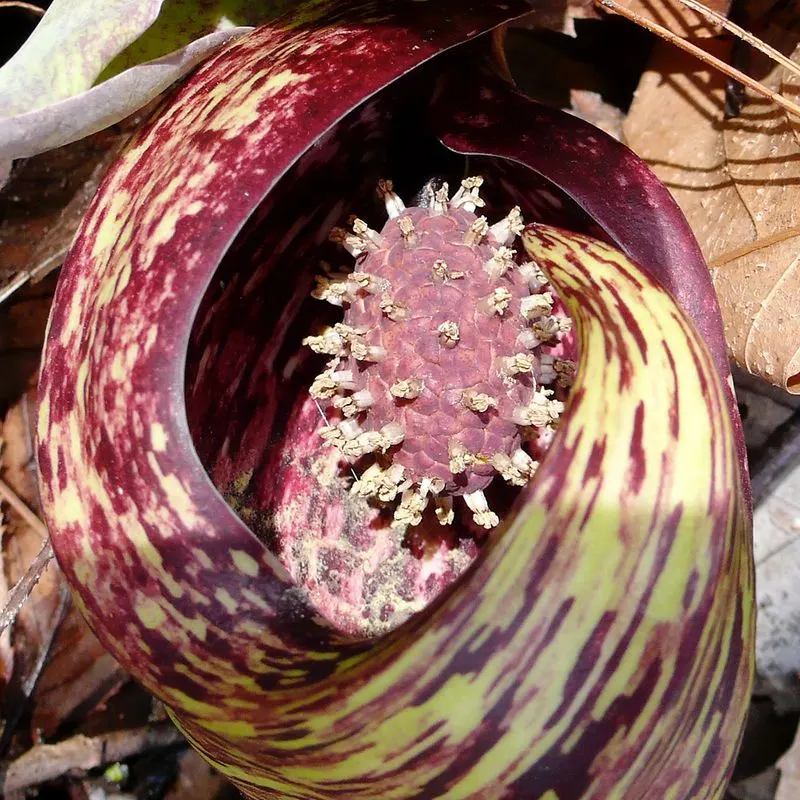
Mimicking the scent of a skunk, this plant thrives in North American wetlands. Its ability to produce heat allows it to flower through the snow, attracting flies and beetles before other plants emerge. The early bloom offers a valuable food source, ensuring pollination in the chill of early spring. Its presence in the landscape, marked by its hooded flowers, underscores its adaptability and resourcefulness. The Eastern Skunk Cabbage’s survival strategy is a remarkable feat of natural engineering.

